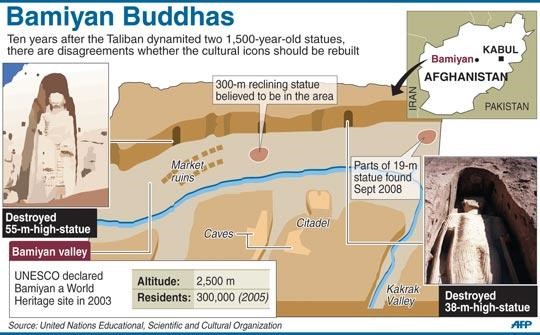Taliban Now Claim to Protect Afghan Heritage
Taliban Now Claim to Protect Afghan Heritage
Why in the News ?
The Taliban, once known for destroying cultural relics like the Bamiyan Buddhas, now claim to be protecting Afghanistan’s archaeological sites, including pre-Islamic Buddhist heritage, with new discoveries emerging in areas like Laghman province since their return to power in 2021.
Historic Shift in Taliban’s Cultural Approach:
- In 2001, the Taliban destroyed the iconic Bamiyan Buddhas, shocking the world.
- Since their return to power in 2021, they claim to support heritage preservation.
- Pre-Islamic and Buddhist artefacts are now being publicly acknowledged.
- Authorities say these are “part of Afghanistan’s history and identity.”
New Discoveries in Post-War Period
- In Gowarjan, Laghman province, archaeologists found Brahmi inscriptions and rock-carved niches.
- These discoveries point to Buddhist influence and civilizations that date back 5,000 years.
- Local officials highlight the potential of such findings to reinforce Afghanistan’s cultural depth.
Global Response and Skepticism
- Experts express caution, citing the Taliban’s past destruction of heritage.
- Valery Freland of ALIPH believes Taliban are aware of the global backlash from the 2001 Bamiyan destruction.
- Taliban’s preservation efforts might be aimed at rebuilding their global image.
Bamiyan Buddhas: Key Facts● Located in the Hindu Kush mountains, central Afghanistan. ● Built in the 5th century AD, once the tallest standing Buddhas in the world. ● Artistic blend of Gupta, Sassanian, and Hellenistic styles. ● Named Salsal (“light shines through universe”) and Shamama (“Queen Mother”). ● Destroyed by Taliban in 2001; added to UNESCO World Heritage list in 2003. ● Bamiyan was a key node on the Silk Road, linking China, India, and Rome. ● Flourished under the Kushana Empire as a Buddhist religious and trade center. |




